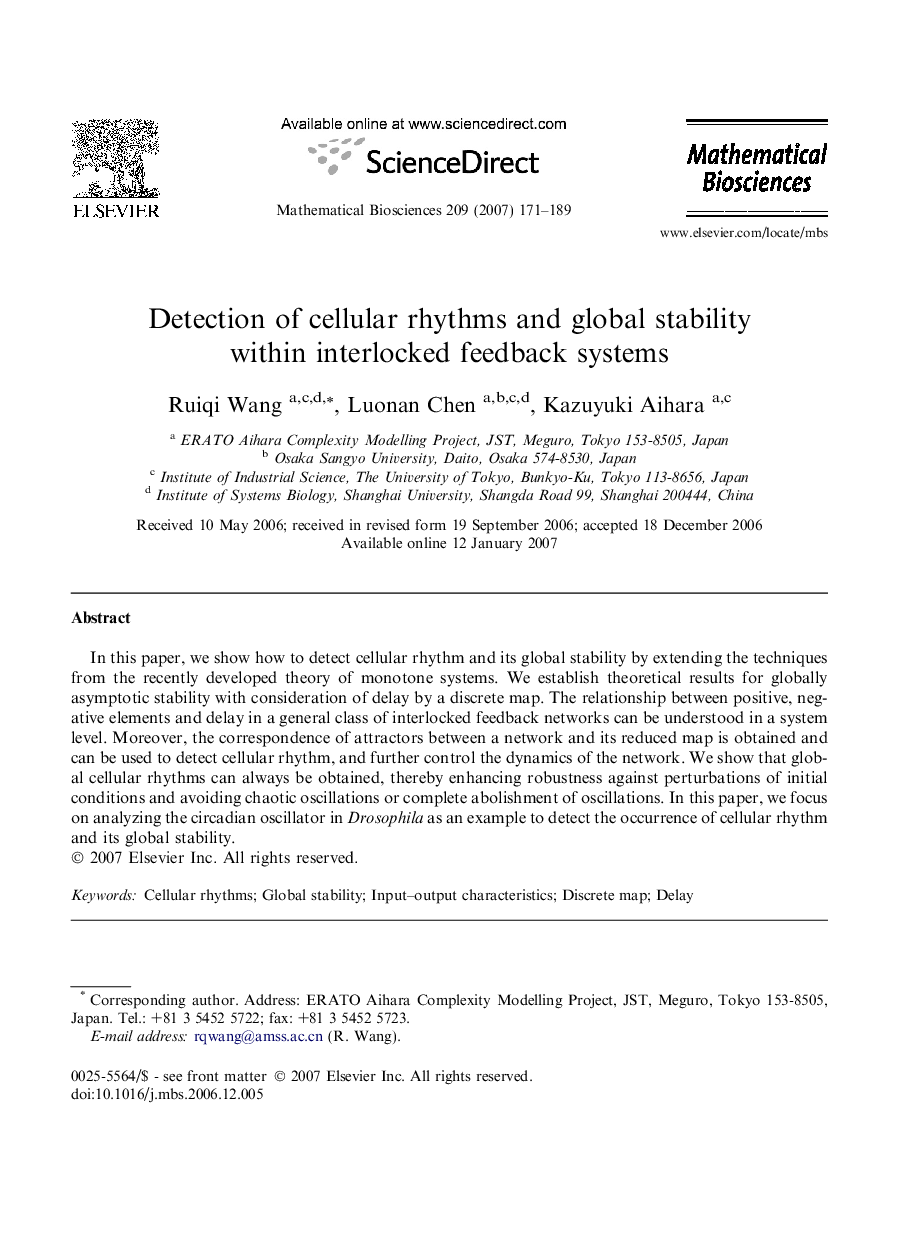| Article ID | Journal | Published Year | Pages | File Type |
|---|---|---|---|---|
| 6372213 | Mathematical Biosciences | 2007 | 19 Pages |
Abstract
In this paper, we show how to detect cellular rhythm and its global stability by extending the techniques from the recently developed theory of monotone systems. We establish theoretical results for globally asymptotic stability with consideration of delay by a discrete map. The relationship between positive, negative elements and delay in a general class of interlocked feedback networks can be understood in a system level. Moreover, the correspondence of attractors between a network and its reduced map is obtained and can be used to detect cellular rhythm, and further control the dynamics of the network. We show that global cellular rhythms can always be obtained, thereby enhancing robustness against perturbations of initial conditions and avoiding chaotic oscillations or complete abolishment of oscillations. In this paper, we focus on analyzing the circadian oscillator in Drosophila as an example to detect the occurrence of cellular rhythm and its global stability.
Keywords
Related Topics
Life Sciences
Agricultural and Biological Sciences
Agricultural and Biological Sciences (General)
Authors
Ruiqi Wang, Luonan Chen, Kazuyuki Aihara,
